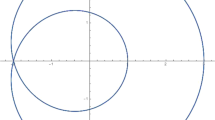Abstract
We introduce the concept of a recursively closed set and give a description of recursively closed classes generated by constants. These classes enter some partially ordered set, which “pierces” the lattice of all classes that consist of primitive recursive functions and are closed under superposition. In describing recursively closed classes generated by constants, we bring in the notion of an ultimately periodic function, which generalizes the concept of a periodic function. The main result is a theorem which holds that a recursively closed class generated by a set of \(n\) constants coincides with a class of all ultimately periodic functions with periods dividing natural degrees of the number \(n!\) which assume their values from that set. A consequence is obtaining a description of recursively closed classes generated by infinite sets of constants. In particular, it turns out that the recursively closed class generated by all constants coincides with the class of all ultimately periodic functions.
Similar content being viewed by others
REFERENCES
S. S. Marchenkov, “Bases w.r.t. superposition in classes of recursive functions,” in Mathematical Problems in Cybernetics-3 (1991), pp. 115-139.
A. I. Mal'tsev, Iterative Post Algebras [in Russian], Nauka, Novosibirsk (1976).
Author information
Authors and Affiliations
Rights and permissions
About this article
Cite this article
Semigrodskikh, A.P. Closed Classes of Ultimately Periodic Functions. Algebra and Logic 40, 112–121 (2001). https://doi.org/10.1023/A:1010264905803
Issue Date:
DOI: https://doi.org/10.1023/A:1010264905803




